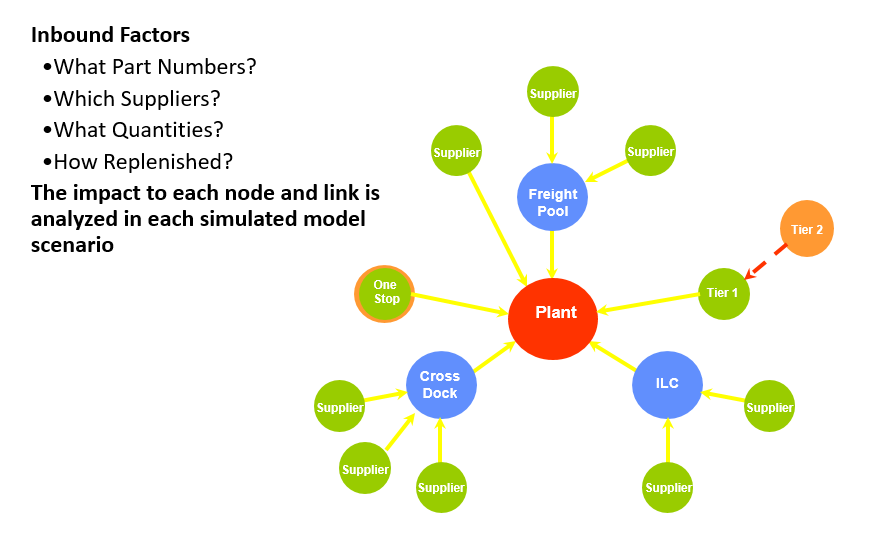
The objective of an analysis is to develop Inbound Supply Chain Network with the ability to understand the current baseline network, identify non-intuitively obvious solutions revealed in analysis and review high level scenarios. The analysis should include multiple part families, regions, suppliers and identify supply chain network opportunities with associated costs and benefits.
A typical Inbound Supply Chain Project covers a period of data included in analysis. It is to be defined covering historical, current, and forecasted data. A two year history and a two year forecast is typical. The customer analysis will include key customers (internal and external) and customers by market/distribution channel. Also included are the key supplier locations and costs for inbound flow. The analysis should consider all facilities currently in the supply, logistics, and production networks.

There are a series on logical steps to be followed in the analysis:
Profile Network
Assess data needs and availability
Review Forecast
Determine expected changes and initiatives
Prepare the network model
Complete the network analysis
The Network Analysis can produce some rather radical changes to the network structure. Moving parts closer to the final assembly facility, make versus buy analysis, the elimination of an operation (machining, etc.) or reducing a Tier II supplier and a postponement strategy (adding a facility, assembly by dealers, etc.) are all examples of major changes that could be very beneficial. Supplier consolidation can occur as a result of commonizing a part. There can be an impact on supply chain costs as a result of part number reduction or the effect of material change on the logistics cost (reducing the size or weight of the part).
At CGN Global, we work with the client to understand the firm’s business history and the relationship they have with their suppliers. With the help of the analytical thinking of our consultants and smart tools, we understand the real problem, provide sustainable solutions, and execute opportunities. CGN’s expertise in supplier collaboration and network modeling provide insights for effective negotiations and successful reductions in lead times, which results in a lean and resilient supply chain.
© 2020 CGN. All rights reserved.